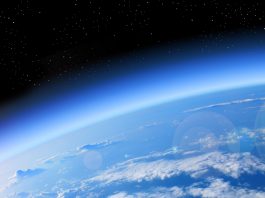A team of Japanese researchers has identified that the phenomenon that causes the Earth’s auroras also instigates mesospheric ozone layer depletion, potentially exacerbating climate change.
The aurora borealis and the aurora Australis – more commonly known as the northern and southern lights, respectively – significantly contribute to mesospheric ozone layer depletion, a process that may amplify the effects of climate change, a research team at Nagoya University, Japan has found.
The study, which Nagoya University’s Professor Yoshizumi Miyoshi led, is published in Nature’s Scientific Reports.
What causes the auroras?
Within the Earth’s magnetosphere – the area of the magnetic field around the planet – electrons that are emitted by the Sun are trapped. These imprisoned electrons can be set free when electrons and plasma waves interact, allowing the electrons to escape and enter the thermosphere (the Earth’s upper atmosphere). This process is what causes the auroras and is called electron precipitation; however, although this mystical light show may seem like harmless entertainment from nature, investigations have revealed that this spectacle is responsible for local ozone layer depletion in the mesosphere, which may have dire consequences for our climate.
Scientists have previously hypothesised that ozone layer depletion in the mesosphere may be occurring specifically during aurorae, and although electron precipitation has been studied comprehensively, until now, no one has been able to illuminate how it causes mesospheric ozone layer depletion.
Solving the ozone layer depletion mystery
To conduct their investigation, the researchers studied a moderate geomagnetic storm situated over the Scandinavian Peninsula in 2017, seeking to analyse its pulsating aurorae (PsA), which is a faint type of aurora. The team employed a plethora of cutting-edge technology for their study, including the European Incoherent Scatter (EISCAT) radar, which was positioned at an altitude between 60 and 120km where the PsA occurs, the Japanese spacecraft Arase, and the all-sky camera network.
Data collated from Arase indicated that the trapped electrons in the Earth’s magnetosphere possessed a vast array of energy, in addition to identifying the presence of chorus waves – a type of electromagnetic wave in that specific area of space. Subsequent computer simulations revealed that Arase had observed plasma waves causing precipitations of the electrons throughout a vast energy range, which correlated consistently with EISCAT observations in the Earth’s thermosphere.
Next, Miyoshi and his team analysed the EISCAT data, signifying that the electrons vary substantially across the energy range, from a few kilo electron volts (keV) to a few mega electron volts (MeV), and precipitate to cause PsA. The electrons possess sufficient energy to penetrate the Earth’s atmosphere to altitudes as low as 60km, the area where the mesospheric ozone resides. Furthermore, the computer simulations demonstrated that these electrons cause immediate mesospheric ozone layer depletion in the localised area by more than 10%.
Professor Miyoshi said: “PsAs occur almost daily, are spread over large areas, and last for hours. Therefore, the ozone layer depletion from these events could be significant. This is only a case study. Further statistical studies are needed to confirm how much ozone destruction occurs in the middle atmosphere because of electron precipitation. After all, the impact of this phenomenon on the climate could potentially impact modern life.”








